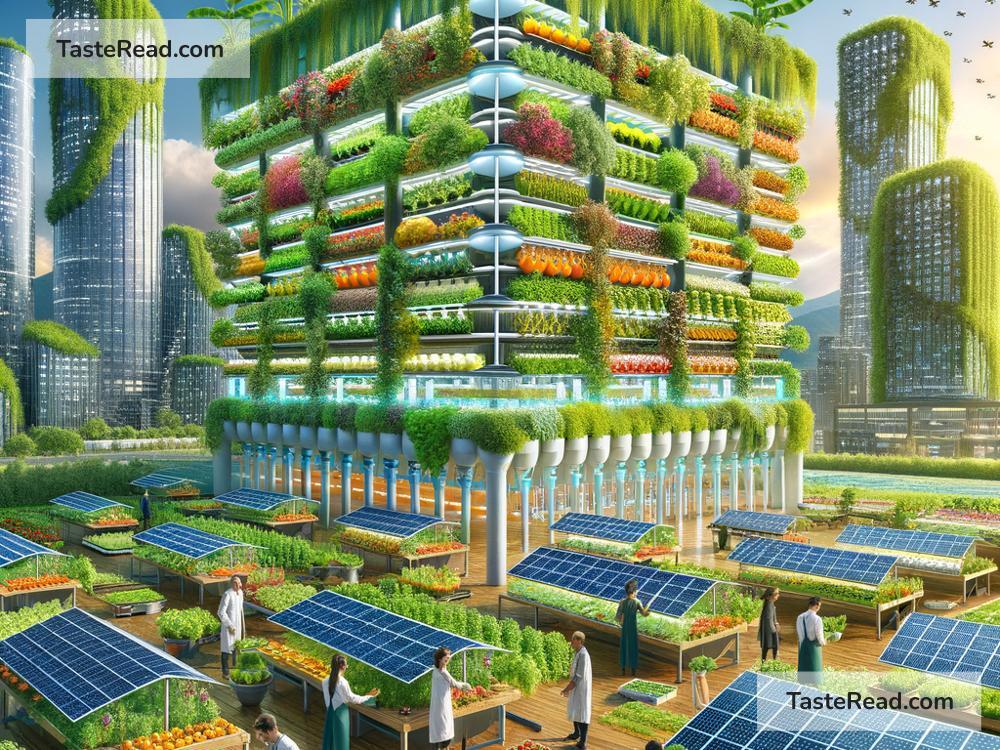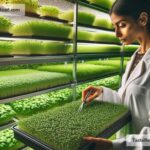The Future of Food and Sustainable Global Systems
Food is a basic need for every person on Earth. Yet, the way food is grown, harvested, processed, and distributed has major impacts on the environment, society, and economies around the world. As the global population increases and climate change affects agriculture, we need new ways to feed people while protecting the planet. The future of food will depend on sustainable systems—methods that allow us to grow and distribute food without harming the Earth or depleting its resources. Let’s explore what the future of food might look like and how we can create more sustainable systems.
Why Change Is Necessary
Today, many parts of the food system are unsustainable. Large-scale farming often relies on practices that hurt the environment, like using too many chemicals, overusing water, and cutting down forests to make room for crops. These actions can lead to problems like soil degradation, water shortages, and loss of biodiversity. On top of that, food production is a major contributor to greenhouse gas emissions, which are a driving force behind climate change.
At the same time, millions of people around the world go hungry every day, while others struggle with obesity and health problems linked to processed foods. Additionally, food waste is a huge issue—about one-third of all food produced globally is never eaten. This wasted food represents lost resources and contributes to greenhouse gas emissions when it rots in landfills.
As we look to the future, it’s clear that we need to create a global food system that feeds everyone in a fair and healthy way, while also protecting the environment for future generations. It’s a big challenge, but there are promising ideas and technologies that can help us get there.
Innovations in Food Production
One exciting area for the future of food is new ways of growing crops and raising animals. Scientists and farmers are working together to create technologies that use fewer resources and have less environmental impact. Here are a few examples:
-
Vertical Farming
Vertical farming is a way to grow food indoors using stacked layers. This method uses much less land and water than traditional farming. Because vertical farms are indoors, farmers can control the environment—like temperature, light, and humidity—so crops grow faster and don’t need pesticides. Many cities are already experimenting with vertical farms to provide fresh produce locally. -
Precision Agriculture
Precision agriculture uses tools like drones, satellites, and sensors to monitor fields and provide detailed information about crops. Farmers can use this data to apply water, fertilizer, and pest controls exactly where they’re needed, instead of spreading them across the whole field. This reduces waste, saves money, and protects the environment. -
Alternative Proteins
Raising animals for meat uses a lot of land, water, and energy and produces significant greenhouse gas emissions. To address this, companies are developing alternative proteins, such as plant-based meats or lab-grown meat. Plant-based meat substitutes made from ingredients like peas, soy, or mushrooms already taste and feel similar to real meat, and lab-grown meat is created using animal cells in a controlled environment. These innovations could reduce the environmental impact of meat production while still giving people the foods they enjoy. -
Aquaponics and Hydroponics
These systems allow plants to grow without soil, using water enriched with nutrients. Aquaponics combines fish farming with plant growing—fish waste provides nutrients for the plants, and the plants clean the water for the fish. These methods use very little water and can be set up in places where traditional farming isn’t possible.
Reducing Food Waste
Solving the issue of food waste is another critical part of building a sustainable food system. Businesses, governments, and individuals can all take steps to reduce food waste. Some initiatives include:
- Smarter Packaging: Many companies are working to create packaging that helps food stay fresh longer.
- Ugly Produce Campaigns: Often, fruits and vegetables that don’t look perfect are thrown away, even though they’re still good to eat. Campaigns encouraging people to buy “ugly” produce can help reduce waste and support farmers.
- Better Storage and Distribution: Using technology to improve refrigeration and transportation can prevent food from spoiling before it reaches consumers.
Supporting Local and Ethical Food Systems
Another important step for the future of food is shifting to local and ethical food systems. By buying food from local farmers, communities can reduce the environmental impact of transporting goods over long distances and strengthen regional economies. Supporting ethical practices—like fair wages for farmers and workers, and sustainable farming methods—ensures that the people producing our food are treated well and the planet is respected.
Final Thoughts
The future of food is about finding creative solutions to feed a growing population without harming the environment. Technology and innovation will play a big role, but individual choices also matter. Small actions—like reducing food waste, choosing sustainable products, and supporting local farmers—can add up to make a big difference.
Sustainable global food systems are essential for our planet and future generations. By working together—including scientists, farmers, governments, businesses, and consumers—we can create a world where everyone has access to healthy food without destroying the environment. The journey won’t be easy, but with effort and innovation, the future of food can be both sustainable and delicious.


